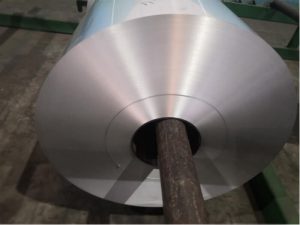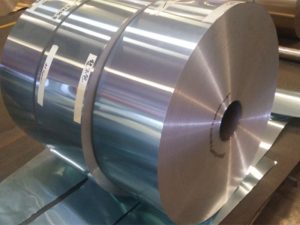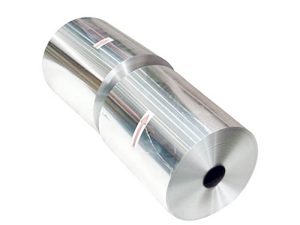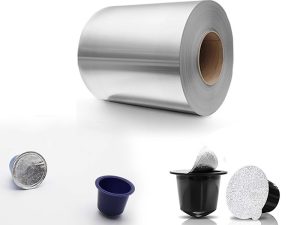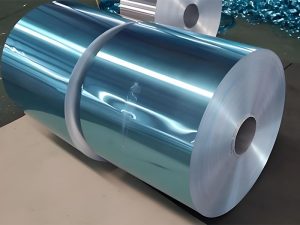Introduction
At Huasheng Aluminum, we pride ourselves on being a leading factory and wholesaler of high-quality electrolytic capacitor aluminum foil. Our commitment to excellence and innovation has positioned us at the forefront of the industry, providing our clients with the most reliable and efficient aluminum foil solutions for their capacitor needs. This comprehensive guide will delve into the world of electrolytic capacitor aluminum foil, exploring its composition, materials, advantages, applications, and the meticulous manufacturing process that goes into creating this essential component of modern electronics.
Composition and Principle of Electrolytic Capacitor Aluminum Foil
Electrolytic capacitors are vital energy storage devices in electronic circuits, and the aluminum foil used in their construction is the key to their performance. Our aluminum foil is meticulously crafted to meet the highest standards of the industry.
Key Components and Their Functions
| Component |
Function |
| Anode Electrode (+) |
Made from etched pure aluminum foil, it forms the positive terminal. |
| Aluminum Oxide Layer |
Created through anodization, it serves as the capacitor’s dielectric. |
| Cathode Electrode (-) |
Known as “cathode foil,” it contacts the electrolyte and forms the negative terminal. |
The aluminum oxide layer provides excellent insulation and electrical stress resistance, ensuring the capacitor’s stable operation.
Selection of Aluminum Foil Materials for Electrolytic Capacitors
At Huasheng Aluminum, we select the finest aluminum foil materials to ensure the superior performance and reliability of our capacitors.
Aluminum Foil Alloys and Their Applications
| Alloy |
Properties |
Suitable for |
| 1070 |
Good conductivity and formability |
Small capacity electrolytic capacitors |
| 1100 |
Excellent corrosion resistance and formability |
Medium capacity electrolytic capacitors |
| 3003 |
Good conductivity, formability, strength, and corrosion resistance |
Large capacity electrolytic capacitors |
| 8011 |
High strength and corrosion resistance |
Special environmental conditions |
These alloys undergo special treatments to ensure surface smoothness and oxide layer uniformity, enhancing the performance and reliability of the capacitors.
Electronic Foil Alloy Grades And Specifications
The choice of alloy and its specifications play a crucial role in the performance of electrolytic capacitors.
Detailed Specifications of Electrolytic Capacitor Aluminum Foil
| Alloy |
Thickness (mm) |
Width (mm) |
Usage |
| 1070, 3003 |
0.012-0.05 |
100-1700 |
Widely used in household appliances, computers, communications, industrial control, electric vehicles, electric locomotives, and military and aerospace equipment. |
Advantages of Electrolytic Capacitor Aluminum Foil
Huasheng Aluminum’s electrolytic capacitor aluminum foil offers several advantages that make it the preferred choice for capacitor manufacturers.
Key Advantages
- Low Density: Aluminum’s low density allows for lightweight, yet strong and durable capacitors, ideal for portable electronics.
- High Surface Area Ratio: The etching process significantly increases the surface area, improving capacitance performance.
- High Conductivity: Aluminum’s excellent conductivity ensures efficient charge conduction, providing stable electrical performance.
Why Use Aluminum Foil For Electrolytic Capacitor
Aluminum foil is the material of choice for electrolytic capacitors due to its unique properties.
Reasons for Choosing Aluminum Foil
- High Surface Area: Crucial for increasing capacitance.
- Thin and Lightweight: Allows for compact and lightweight capacitors.
- High Purity: Minimizes impurities affecting performance.
- Anodized Surface: Forms a protective oxide layer as the dielectric.
- High Dielectric Strength: Withstands higher voltage levels.
- Stability and Reliability: Provides consistent performance over time.
Applications of Electrolytic Capacitor Aluminum Foil
Electrolytic capacitors made with our aluminum foil are used in a wide range of applications, making them indispensable in today’s electronic devices.
Major Applications
- Capacitors: Used in electronic circuits for filtering, coupling, and energy storage.
- Speakers: Essential in speaker circuits for audio applications.
Manufacturing Process of Electrolytic Capacitor Aluminum Foil
The manufacturing process at Huasheng Aluminum is a testament to our commitment to quality and precision.
Step-by-Step Manufacturing Process
- Material Selection and Preparation: We select high purity aluminum foil and optimize its conductivity and corrosion resistance through specific alloy treatments.
- Etching Process: An electrochemical process that enlarges the surface area by forming micro-pores and grooves.
- Anodization Treatment: Forms an oxide layer that enhances insulation properties and surface mechanical properties.
- Precise Manufacturing Process Control: We maintain strict control over foil thickness, surface smoothness, and microstructure.
- Final Assembly and Encapsulation: The processed aluminum foil is assembled and encapsulated with electrolyte, ensuring compliance with industry standards.
How to Make a Capacitor Out of Aluminum Foil
Interested in creating your own capacitor? Here’s a simple method using our high-quality aluminum foil.
Materials Needed
- Two pieces of aluminum foil
- Dielectric material (paper or thin plastic film)
- Conductive leads (wires)
- Insulating material (for separating the aluminum foils)
Step-by-Step Guide
- Cut Aluminum Foil: Cut two rectangular pieces; the size affects the capacitance.
- Prepare Dielectric Material: Cut a piece slightly larger than the aluminum foil to place between the layers.
- Assemble Layers: Sandwich the dielectric between the aluminum foil, ensuring no direct contact.
- Connect Leads: Attach wires to each piece of aluminum foil as terminals.
- Insulate: Cover the sides with insulating material to prevent accidental contact.
- Test: Measure capacitance or test in a circuit.
